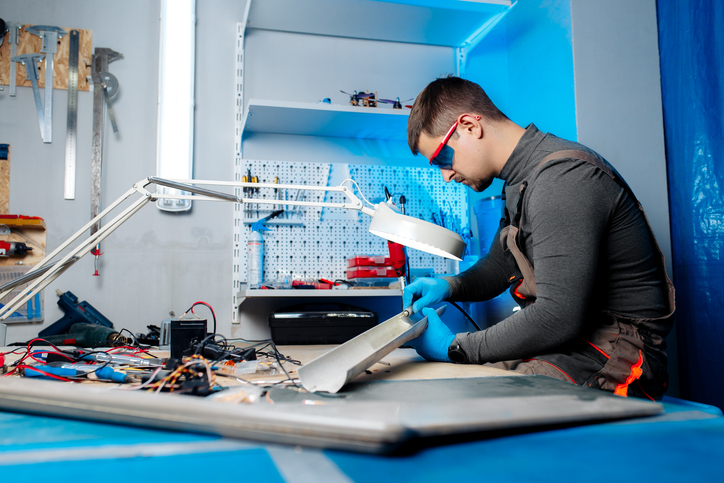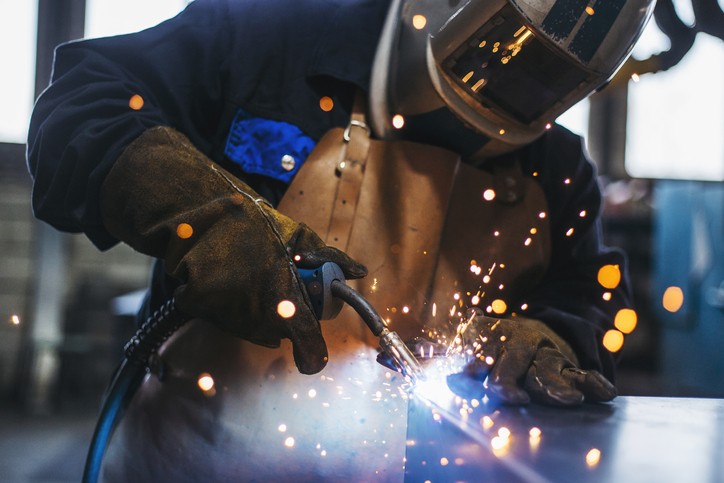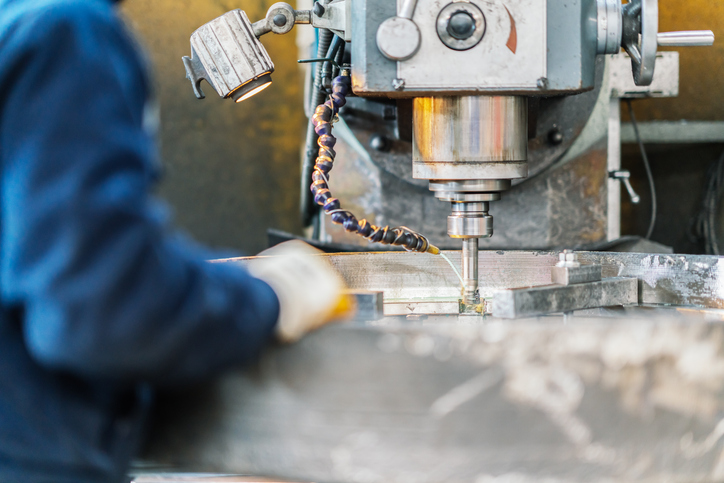- Understanding Aluminum and Its Properties
- What Is Aluminum Fabrication?
- Aluminum Fabrication Techniques
- Design Considerations for Aluminum Fabrication
- Challenges in Aluminum Fabrication and How to Overcome Them
- The Role of Aluminum in Sustainable Manufacturing
- Advantages of Aluminum Fabrication in Sustainable Practices
- Challenges and Solutions in Sustainable Aluminum Fabrication
- The Future of Aluminum Fabrication in Sustainability
- Conclusion
Aluminum fabrication, just like any type of metal fabrication, is a process that forms the metal into a specific shape. There are numerous aluminum fabrication techniques and methods that can result in different types of shapes. The process you use depends on what you need to create your product and what qualities you are looking for in each part.
Here we will explore aluminum fabrication, techniques, design considerations, machining challenges, and its role in sustainable manufacturing.
Understanding Aluminum and Its Properties
Aluminum is a silvery-white and very lightweight metal that is soft and malleable. It is also the most abundant metal in the Earth’s crust. This means that not only is aluminum incredibly useful in creating lightweight but strong parts for anything from buildings to planes, and it is also an abundant resource.
Other critical properties of aluminum include:
- a high strength-to-weight ratio;
- being non-ferrous, non-magnetic, and non-toxic;
- being corrosion-resistant;
- being machinable; and
- being compatible with other known alloys and surface treatments that can enhance aluminum’s natural properties.
What Is Aluminum Fabrication?
Aluminum is one of the most widely used metals in the world, primarily because it’s lightweight, corrosion-resistant, and highly durable. These properties make this metal versatile and ideal for many applications. To harness the full potential of aluminum, it must undergo several fabrication processes, including casting, forging, extrusion, and welding.
Aluminum fabrication is widely considered a sustainable manufacturing process for several key reasons:
- Recyclability: Aluminum is highly recyclable. The recycling process for aluminum requires only a small portion of the energy needed to produce aluminum from the original raw materials. Recycled aluminum also retains its properties.
- Energy Efficiency: The initial production of aluminum from ore requires a huge amount of energy. However, once produced, aluminum can be used and re-used in various applications with far lower energy requirements. Additionally, advancements in production technologies are making primary aluminum production even more energy efficient.
- Lightweight: Aluminum’s lightweight nature means that it can be used in places and for purposes that many other metals just can’t. Aluminum provides the structures for many products, such as vehicles, where its lighter weight means lower transportation costs and energy consumption. This means an additional overall contribution to sustainability.
Aluminum Fabrication Techniques
There are several aluminum fabrication techniques, each with advantages and disadvantages. Here are some of the most commonly used methods of fabrication for aluminum.
Machining
This method of fabrication is a subtractive method. This means that rather than joining two or more parts together, it continually removes material from a single piece until it reaches the desired specifications.
Brazing Processes
This includes processes such as brazing, welding, and soldering and is one of the most commonly used fabrication methods. It is used to join two or more metal parts using heat, pressure, or a combination.
Sheet Metal Fabrication
This is the largest category of metal fabrication techniques. It consists of stamping, punching, cutting, and rolling. Stamping is used to create raised areas in a sheet of metal. Punching, on the other hand, may appear similar to stamping, but it uses a combination of a punch and a die to punch holes into the metal.
There are two primary methods of cutting aluminum sheets for fabrication. These are laser cutting and water jet cutting. Luckily, these names are quite self-explanatory, and laser cutting uses a high-power to cut through the metal, whereas water jets use extremely pressurized water to achieve a similar result.
The final type of sheet fabrication is rolling. For this process, the aluminum is heated (until it becomes more malleable), and it is rolled between two heavy cylinders until it forms a sheet of the desired thickness. You can think of this process as making fresh pasta with a pasta roller — just replace the pasta dough with aluminum.
Casting
Another aluminum fabrication method is casting. This method involves pouring molten metal into a mold to form the desired shape. The metal is then cooled, the mold removed, and you are left with a solid casting of your design. This is a very versatile fabrication method and extremely effective for complex shapes.
Extruding
Extruding is a fabrication process in which malleable aluminum is pushed through a die that shapes it into the desired cross-section of the final form. This can be challenging to picture from just a description, but think about the process, like pushing toothpaste out of its tube and creating a perfect cylinder shape on your toothbrush.
Forging
The final fabrication process to cover is forging. This process involves shaping the aluminum by pounding, pressing, and squeezing it until it has the desired shape. Parts formed by forging are more resistant to impact due to this process; therefore, they are most commonly used in areas where impact resistance is crucial — such as gears, wheels, pistons, wrenches, hammers, and pliers.
Design Considerations for Aluminum Fabrication
There are two primary design considerations when fabricating aluminum for your projects. These are as follows.
Use Environment
The first design consideration for any project is what the end product will be used for. Knowing what environment your product will be in, and its potential risks, is crucial to helping you determine what material and design you should use.
You will need to consider:
- the melting point of your metal,
- its toxicity,
- the chemicals it can or cannot be exposed to — for example, aluminum reacts very strongly with anything acidic, and
- how corrosion-resistant your material is.
Coatings and Treatments
The other thing you will want to consider when finalizing your design is what coatings and treatments your final product will have. Depending on your product’s intended purpose, you will need to include coatings or treatments — such as an anodizing coating — to ensure that your product functions properly.
Challenges in Aluminum Fabrication and How to Overcome Them
While aluminum can be used in many forms, industries, and applications, there are some challenges that you may face when fabricating aluminum for your projects. Some of the most significant challenges include the following.
Ease of Machining
Due to its malleable nature, aluminum can cause issues during the machining process. The most prominent issue that aluminum faces is that it can get stuck in machines and cause them to not function properly. This happens because the aluminum is soft and can get gummy, especially when warmed.
To combat these issues, you can:
- Minimize complicated machining operations by doing as much as possible by welding, brazing, cutting, and soldering.
- Ensure that your machinists are experienced and familiar with the equipment.
- Commission aluminum parts from fabrication houses.
High Flexibility
Aluminum is a very flexible metal (just think about how malleable soda cans are). While this can be a great property in certain situations, it can pose certain challenges in aluminum fabrication. To combat this flexibility, you need to account for it in your design. This could mean adding extra thickness to keep the material more rigid, or including reinforcing struts to your design.
Energy Consumption
Another challenge of aluminum fabrication is that it can be extremely energy-intensive. To overcome this issue, you can utilize hydroelectric or solar power for these processes. Alternatively, you can commission the aluminum pieces you need from a metal fabrication shop that has the pre-existing infrastructure needed.
The Role of Aluminum in Sustainable Manufacturing
Aluminum is critical for eco-friendly manufacturing. This is true for various reasons, including its versatility. Because aluminum can be used and reused across so many industries, it enables more innovative and sustainable designs. Furthermore, the recycling process for aluminum results in significantly lower greenhouse gas emissions compared to primary aluminum production or other metal-based manufacturing processes.
This means that businesses that use recycled aluminum in their manufacturing processes can have a smaller carbon footprint. In fact, recycling aluminum requires just five percent of the energy required to produce new aluminum, making it a cost-effective choice for any manufacturer looking for sustainable solutions.
The other key benefit of using aluminum in sustainable manufacturing is its durability. At the end of the day, sustainability is all about durability.
How long does something last before it has to be thrown out and replaced?
- Aluminum has uniquely high durability.
- Highly resistant to corrosion and bad weather conditions.
- Products made from aluminum need fewer replacements.
- Recyclable, which reduces waste and conserves natural resources.
To truly understand aluminum’s role in sustainable manufacturing, one need only look at the many sustainable products that have been manufactured using fabricated aluminum. These include solar panels, electric vehicles, and sustainably designed buildings. Plus, because aluminum is infinitely recyclable, its contribution to sustainability occurs even after the product has reached the end of its life.
Each of these products, and many more, such as beverage cans, cars, and trucks, can all be recycled. The aluminum can then be reused in another product or for another purpose.
Advantages of Aluminum Fabrication in Sustainable Practices
Outside its durability and recyclability, there are many more environmental benefits to using aluminum. Firstly, because of its recyclability, aluminum helps to reduce landfill waste. Landfill waste is a major problem when it comes to sustainability and conservation.
However, businesses that utilize aluminum are helping to reduce waste by using reusable materials. Aluminum possesses certain key sustainability attributes that make it perfect for energy-efficient designs. This is why it is often used in the construction of energy-efficient windows and building facades.
Ultimately, businesses need to think about long-term success when it comes to their manufacturing practices. Each year, new environmental regulations place new requirements, and costs have only been increasing in every industry. Using aluminum is the smart choice from costs because it is a source material that can always be cost-effectively acquired through recycling programs.
Aluminum can help your manufacturing business lower its carbon footprint and demonstrate compliance with regulations. Disposing of end-of-life material is not only negative for the environment, but it is also negative for your bottom line. Aluminum’s recyclability enables you to avoid this cost.
Here at NAMF, we strive to maximize sustainability in aluminum fabrication by adopting a big-picture approach that considers the entire lifecycle of the parts we produce. This includes sourcing raw materials from responsible suppliers, utilizing energy-efficient technologies and processes, minimizing waste and emissions, and promoting recycling and reuse of materials. We are constantly seeking innovative solutions and alternative equipment that can help us further reduce our environmental impact.
Challenges and Solutions in Sustainable Aluminum Fabrication
Sustainable aluminum manufacturing is not without its challenges. The most significant challenge is reducing the energy consumption required in the production process. This can be addressed by investing in advanced technologies and innovative design features focused on greater efficiency and less waste.
Another challenge is finding ways to reduce greenhouse gas emissions. This can be addressed by utilizing recycled aluminum rather than primary aluminum production.
NAMF has invested in advanced technology like 5-axis milling machines to promote greater efficiency, less waste, and more sustainable manufacturing processes. Continuous improvement is also key to sustainable aluminum manufacturing, as it drives innovation and encourages the adoption of new technologies and processes.
The Future of Aluminum Fabrication in Sustainability
The future trends in sustainability are centered around advancements in technology and innovation. With the emergence of AI and machine learning, businesses can analyze and predict what their environmental impact will be.
At NAMF, we are committed to advancing sustainable practices through the use of cutting-edge technology and processes. As the world continues to prioritize sustainability, NAMF is committed to leading the way towards a greener future.
Conclusion
Aluminum is used in many industries and is the most abundant metal on Earth. So, if you haven’t already been part of a project that requires aluminum fabrication, you likely will eventually. But, even as the most abundant metal on the planet, finding the right machined aluminum for your particular needs can be challenging.
It also plays a vital role in sustainable manufacturing, offering a plethora of eco-friendly benefits. From its recyclability, energy efficiency, and lightweight nature to its durability, aluminum is a cost-effective and sustainable choice for any manufacturer.
If you are looking for custom aluminum fabrication or machining, contact us today at New Age Metal Fabricating (NAMF). We have proudly served the New Jersey area for over 40 years, and we have the advanced tools you need to realize your project.



